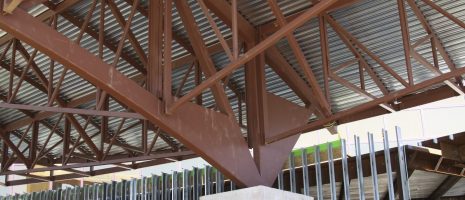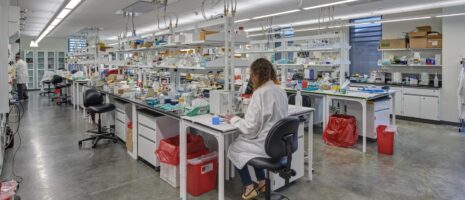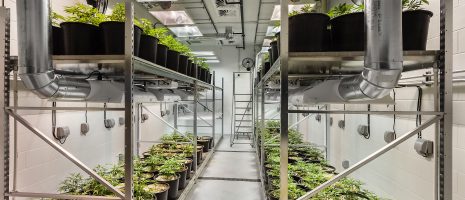Long-standing drought in Nevada calls for innovative solutions
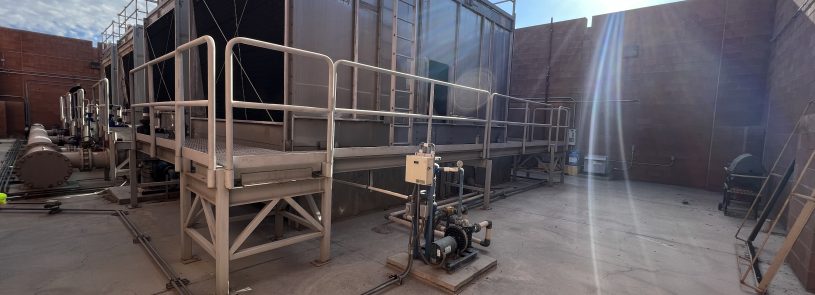
By Mindy Haffke
New conservation measures by the Southern Nevada Water Authority (SNWA) to reduce water consumption in the Las Vegas Valley require new and innovative solutions for HVAC cooling systems that utilize methods other than water.
Due to the extreme drought conditions in the area, the water level in Lake Mead, which is a prime source of the community’s drinking water, has dropped more than 150 feet since January 2000, according to the Las Vegas Valley Water District. Even though existing conservation measures have curbed water usage in the area, with reports showing the community used less water in 2022 than it did 20 years prior, these new initiatives from the SNWA are taking water conservation a step further.
These new measures, rules, and ordinances, which impact IMEG’s clients in the Las Vegas area, limit the size of new swimming pools at single-family residential properties to 600-sf and ban new golf courses, water features (including on the Las Vegas Strip), and installation of cooling systems that consumptively use water, which is the area’s second largest water usage after landscape irrigation. Although the arid climate makes evaporative cooling very effective, the understanding of this statistic along with the new requirements pushes engineers to use other types of systems that use no water at all. The SNWA is also requiring businesses to replace existing nonfunctional grass with water-smart alternatives and prohibiting grass in new residential areas—but is also offering rebates to help owners make the change. Existing infrastructure is not affected by these measures.
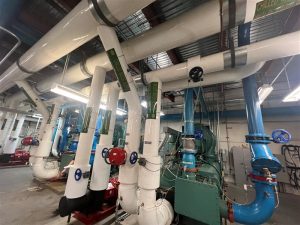 These water regulations on evaporative cooling systems may be most challenging for owners who are looking to submit construction documents after the Sept. 1 effective date. Building design that uses these systems include swamp coolers typically used for warehouses and airport hangars and open circuit cooling towers that support water-cooled chillers, which is the most common system on the Las Vegas Strip.
These water regulations on evaporative cooling systems may be most challenging for owners who are looking to submit construction documents after the Sept. 1 effective date. Building design that uses these systems include swamp coolers typically used for warehouses and airport hangars and open circuit cooling towers that support water-cooled chillers, which is the most common system on the Las Vegas Strip.
We’re working closely with equipment manufacturers to test different options, many of which result in increased electricity use paired with non-ideal implementation conditions (i.e., increased equipment footprint, increased noise levels, increased capacity derates at high ambient temperatures, etc.). The alternative solutions that are compliant with the new water district criteria and more commonly used are air source equipment such as air-cooled chillers, heat pump/heat recovery chillers, and variable refrigerant flow (VRF) systems.
Other innovative solutions that are not as commonly used are closed circuit cooling towers and adiabatic cooling. Closed circuit cooling towers do not have direct contact with the air, thus, technically not evaporating. Adiabatic cooling systems remove heat by an evaporative process in a stream of warm, dry air, but still use evaporative cooling. Unfortunately, neither may be an optimal solution, as both options are less efficient than using open circuit cooling towers and still use water.
Additionally, the increased electricity usage brings new challenges. One commonly known challenge across the nation is the current supply chain issues, which make the acquisition of certain electrical equipment such as generators, panels, transformers, and switches almost impossible in a timely manner.
These collective challenges are necessitating new approaches and methods in our designs as we seek innovative, parallel solutions to combat electrical shortages, save water, and reduce energy simultaneously.
Photos show new systems installed at the Clark County Government Center, Las Vegas, Nevada.









